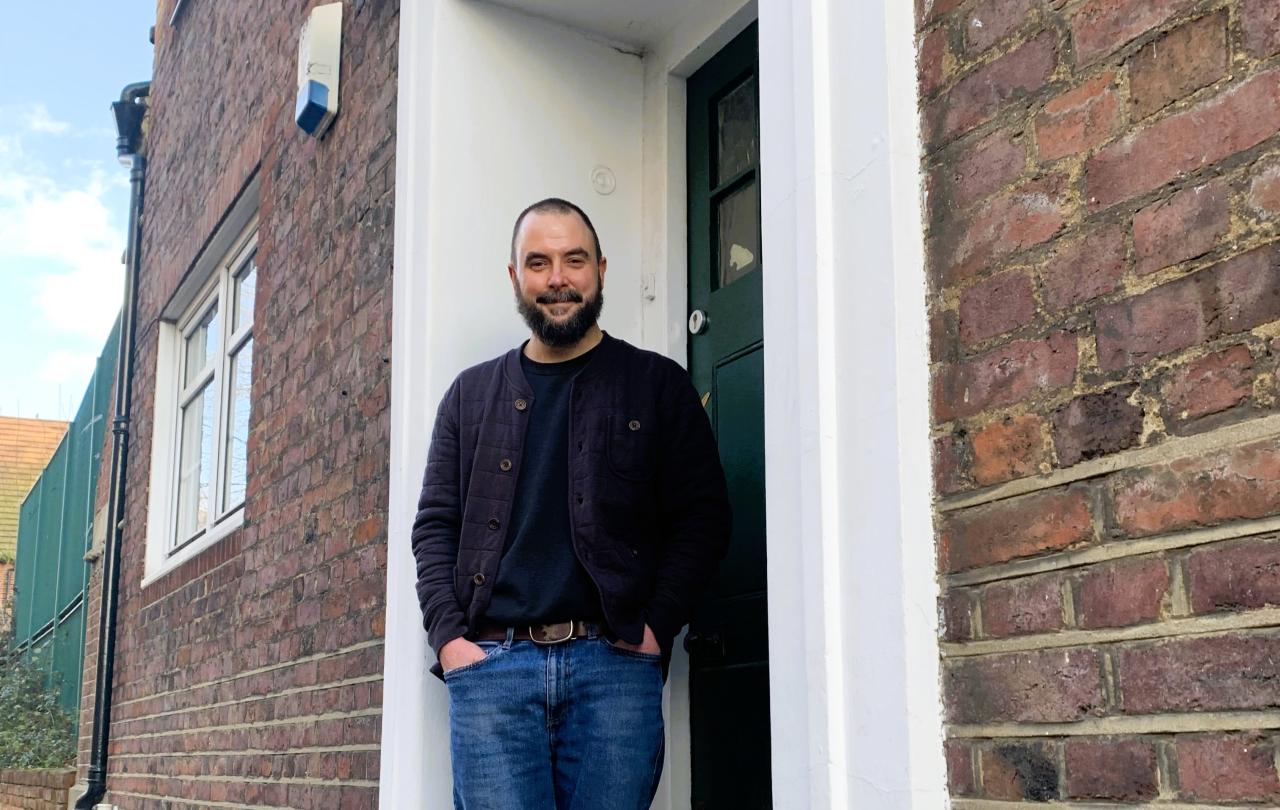
Mark Bishop has an unusual view from his home in Stepney, east London, at Friday lunchtimes. Because the nearby Stepney Shahjalal mosque has insufficient space for worshippers at its busiest weekly service, neighbouring Shandy Park turns into an impromptu outdoor worship space. For the main Friday service, more than 500 men alternate between standing and kneeling in prayer in the open air.
The scene has seized the attention of Bishop, an ordained Church of England priest, because his home is the House of Prayer for East London (HOP East), a community that he and Carrie, his wife, founded in 2023. From its base in Faith House, built as a 19th century mission outpost on the edge of Shandy Park, it is seeking to bring the power of Christian prayer to the same area. Bishop and Carrie live at HOP East with their children and another couple.
The community is one of multiple Christian “intentional communities” worldwide engaged in concerted efforts to develop new forms of monastic or communal living to minister to an increasingly secular world. The trend has had particular attention in the UK because of the decision of Elizabeth Oldfield, a Christian writer and podcaster, and her husband to live in an intentional community with another couple. In Germany, Johannes Hartl 20 years ago in Augsburg founded a community called the House of Prayer where there is always at least one community member praying, 24 hours a day.
HOP East was partly inspired by Hartl’s community. The Stepney community shares with many other Christian intentional communities both a strong sense of ministering to a particular place and a focus on the importance of prayer. As well as the residents, there are a growing number of non-resident members who regularly come to Faith House for prayer, worship and to eat together.
The open-air prayer highlights both the contrast between HOP East and its many non-Christian neighbours and their shared commitment to prayer, according to Bishop.
“We’re amongst everybody, to be good Christian neighbours,” he says.
Kirsten Stevens-Wood, a lecturer in Cardiff Metropolitan University’s school of education and social policy who has a research interest in intentional communities, says Christians have a particular affinity for communal living.
Stevens-Wood points out that sociologist Rosabeth Moss Kanter – better known for her later management writing – concluded after researching intentional communities that Christianity’s mixture of shared commitment and rituals was highly compatible with communal living.
“It enables communities to be more stable and endure longer periods of time,” Stevens-Wood says.
New communities such as HOP East coexist with the survivors of previous waves of idealism about communal living. In the UK, they include Northern Ireland’s Corrymeela Community, which seeks to heal the polarisation caused by the political conflict in the region. Bishop himself was born in the Lee Abbey community in Devon, a Christian community linked to Anglicanism founded after the second world war.
The London outpost of Lee Abbey runs a hall of residence for international students in Kensington, on the other side of London from HOP East.
“They definitely come in waves,” Stevens-Wood says of intentional communities.
HOP East’s focus on prayer is manifested in multiple ways, according to Bishop. They include a commitment for members to say the Lord’s Prayer daily at noon, wherever they are, and to engage in “prayer-walking” – praying in the streets as they walk along them.
“To our Muslim neighbours, it really helps to be more serious about how we pray, because they’re really serious about prayer,” Bishop says. “This is very much a neighbourhood where prayer is strong.”
He and Carrie had long felt a calling to pray for London and East London in particular before setting up HOP East, he says.
“We began, out of lots of different activity, to ask a question: ‘What would it look like to form a community as an expression of church?’” Bishop recalls. “We’re a new monastic expression. We’re living out, working out a rule of life and other things that might define what a new monastic community is.”
Members of the community range in age from school-age children to older, retired people, Bishop says. He describes the community as “both gathered and scattered”, with only a few of the community members living in Faith House.
But he says living in a relatively small number of East End neighbourhoods – including Limehouse, Mile End and Shadwell - unites them.
“Everybody else has a level of proximity to us,” Bishop says.
The points of contact between apparently contrasting communities are clear visiting the imposing Kensington townhouses owned by Lee Abbey London.
Sue Cady, Lee Abbey London’s chaplain and deputy director, says the site is home to 150 international students and around 25 team members who form the community on the site.
The students living at Lee Abbey London are mostly not Christians while the team members who serve them make up the community. Team members consist of a small core of longer-term workers like Cady and one-year volunteers who are single and share rooms. While Cady would like to welcome more British volunteers for the one-year positions, nearly all at present come from overseas on charity worker visas.
Cady shares with Bishop the sense that a place where Christians live and pray together is special. Lee Abbey London expresses that partly by training up a new generation of Christian leaders, she says.
“The young Christians are being grown and developed and then after their year with us they’re going all over the world as stronger Christians, grown in discipleship and leadership,” Cady says.
She is also clear that the life of the community affects the students.
“Our mission field is the international students, who are really open about UK life and asking us questions about our faith and the difference our faith makes to us,” she says. “They notice something very different about us that’s peaceful and kind.”
At the heart of both communities, however, is a sense that prayer is a vital, sustaining, communal activity.
For Cady, that manifests itself in Lee Abbey London’s distinctive atmosphere compared with other halls of residence.
“People comment on the sense of God’s peace and God’s presence here, which I think is due to the fact that our team worship and pray daily for the residents that live here, and that the majority of our team are on gap years themselves,” she says.
At HOP East, meanwhile, prayer is partly a manifestation of the members’ practical desire to help impoverished and disadvantaged people in their area. Community members pray for the area’s many refugees and those working with them, for victims of modern slavery and for many other social causes.
However, the pledges to engage in prayer-walking and saying the Lord’s Prayer daily reflect Bishop’s conviction that prayer is a sustaining activity regardless of any practical need. Bishop insists prayer is a vital part of relating to God, of mission and ensuring people have opportunities to encounter the love of Christ.
“We always try to remind ourselves… that prayer is always worth it, in and of itself,” he says. “We’re really aware of a hunger in this cultural moment we find ourselves in for healthy spiritual practice.”
Join with us - Behind the Seen
Seen & Unseen is free for everyone and is made possible through the generosity of our amazing community of supporters.
If you’re enjoying Seen & Unseen, would you consider making a gift towards our work?
Alongside other benefits (book discounts etc.), you’ll receive an extra fortnightly email from me sharing what I’m reading and my reflections on the ideas that are shaping our times.
Graham Tomlin
Editor-in-Chief






